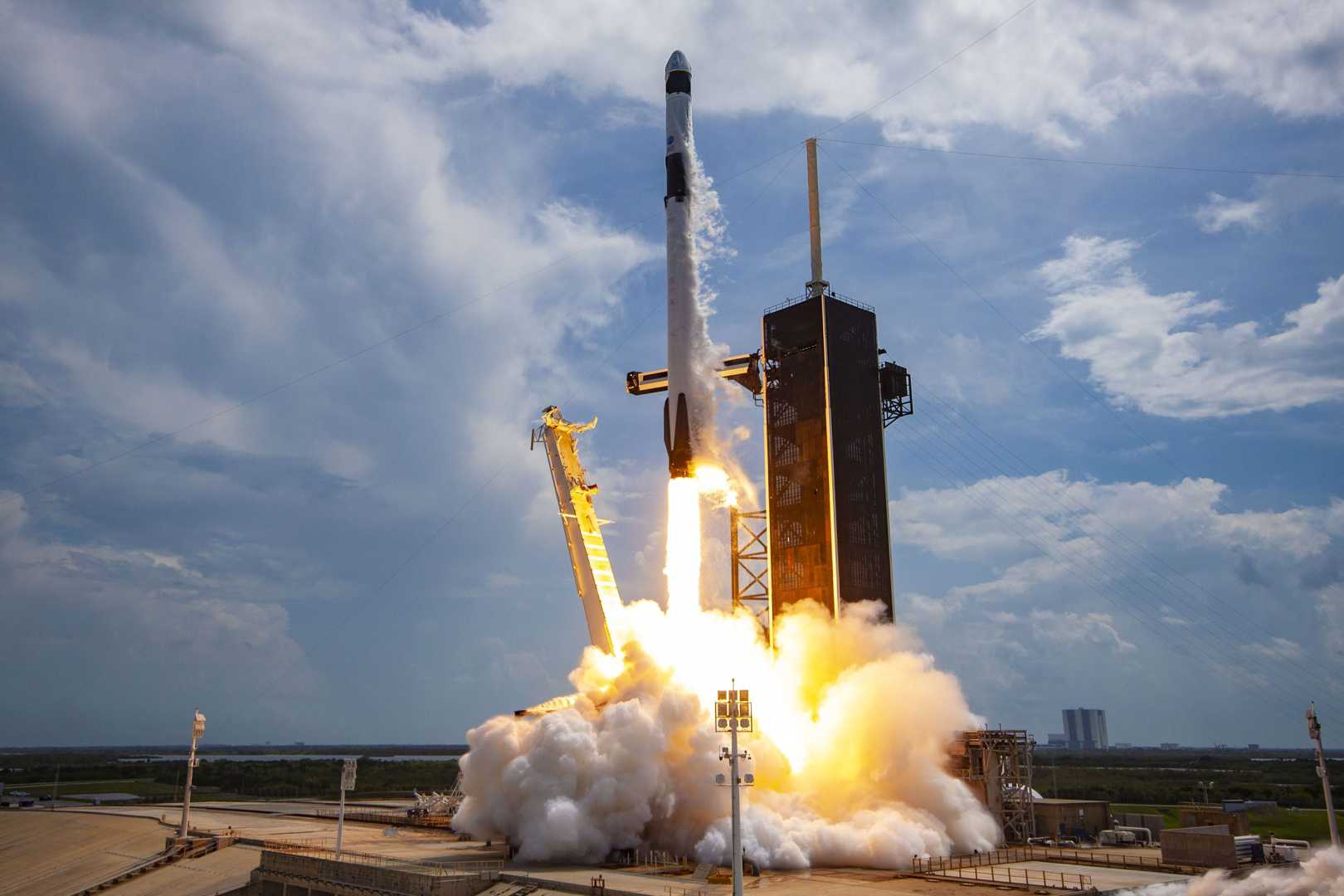News
SpaceX Achieves Milestone with 300th Falcon 9 Launch Success

CAPE CANAVERAL, Fla. — SpaceX celebrated a significant milestone on April 22, 2025, as it successfully completed its 300th Falcon 9 launch. The launch took place at 8:48 p.m. EDT from Space Launch Complex 40, carrying a payload for the Bandwagon-3 rideshare mission. This launch marked a continuation of SpaceX’s rapid flight schedule, with three launches occurring in less than 48 hours.
The Falcon 9 first stage booster, tail number B1090, achieved a successful landing at Landing Zone 2 about eight minutes post-launch. Following its previous missions for the O3b mPOWER-E and Crew-10 flights, this was the booster’s third journey to space and back. Notably, this launch also became the 245th orbital flight from SLC-40 and part of a broader series for the mid-inclination rideshare program.
Weather conditions were favorable for the launch, with the 45th Weather Squadron providing a 95% chance of clear skies. SpaceX’s ability to maintain such a rapid launch pace reflects its operational efficiency and the growing demand for satellite deployments in low Earth orbit.
Among the notable payloads included in the Bandwagon-3 mission was the fourth synthetic aperture radar (SAR) satellite for South Korea’s 425 Project, intended for military surveillance. Prior to this launch, South Korea’s Agency for Defense Development (ADD) awarded a contract worth 588 billion won ($530 million) for the development and deployment of five surveillance satellites by 2025.
“Our advanced Synthetic Aperture RADAR technology enables high-performance observation capabilities crucial for the success of this program,” explained a representative from Thales Alenia Space, the prime developer involved in the satellite’s construction.
Co-launching with the Korea 425 satellite were Tomorrow.io’s Tomorrow-S7 satellite, intended for weather observation, and Atmos Space Cargo’s Phoenix re-entry capsule, marking a significant step in private space-reentry missions. The Phoenix mission aims to gather data on its inflatable heat shield during its atmospheric re-entry, challenging traditional methods in space technology.
“This mission plays a critical role in shaping the future of reusable spacecraft for various applications,” said Lori Garver, former NASA Deputy Administrator and member of the Atmos advisory board. “The return of valuable research materials and resources can lead to groundbreaking advancements in space transportation.”
The Phoenix 1 mission will operate in low Earth orbit before attempting a re-entry that will begin over California before splashing down approximately 2,000 kilometers off the coast of Brazil. This trajectory adjustment signifies the adaptive nature of these mission profiles to various operational challenges.
As the Space Coast prepares for a busy year of launches, SpaceX’s recent success underscores the vital role of commercial partnerships in expanding the reach of space exploration and technology development. With over 300 successful Falcon 9 launches, SpaceX continues to set the pace for the space industry, aiming for an ambitious number of launches in the coming months.
The launch also emphasizes the trend toward increasing frequency of satellite launches as businesses and organizations recognize the importance of consistent data access enabled by robust satellite networks.












